
By Kirk McKinzie and Kevin Sofen
In the rapidly evolving landscape of emergency services, integrating advanced technological solutions stands at the forefront of transforming operations and enhancing the efficiency and effectiveness of fire, rescue, and emergency medical service (EMS) teams.
As we advance, the focus on developing mobile infrastructure through specific, measurable, achievable, relevant, timely (SMART) apparatus and chief officer rigs, aka “buggies” equipped with high-speed data connectivity, has never been more critical. This article explores these innovative rigs’ pivotal role in modernizing public safety operations, highlighting the benefits of integrating compatible technology partners into emergency response frameworks. Moore’s law has proven true again to enable a small and affordable technology footprint that provides resilient data connectivity.
Emerging Trends in Emergency Response
The need for resilient, advanced mobile infrastructure is becoming increasingly apparent. Integrating interconnected technologies, cyber-physical systems, and high-speed connectivity into vehicles offers a revolutionary approach to managing incidents. These rigs serve as mobile command centers, enabling real-time data sharing, analysis, and decision-making in critical situations. The systems of systems approach can now provide network blending across previously siloed LTE networks to create a single IP address that combines the best of each network and satellite connectivity when LTE is unavailable. Mesh-networked systems can take data connectivity from the command vehicle and extend Internet- protocol-enabled systems for updated voice communications.
The Need for Advanced Mobile Infrastructure
The foundation of these advanced mobile command units is the ability to offer seamless, high-speed data connectivity. Failover and fail- back—processes where a system automatically switches to a backup network during a failure and then reverts to the primary network once restored—must be carefully managed. Failover failback between different networks at the wrong time during an incident can lead to catastrophic outcomes. Ensuring redundant and resilient self-healing alternative communications is critical to avoid failover failback. This connectivity is crucial for real-time information exchange, from live video feeds for enhanced situational awareness to remote sensing and space imaging. Integrating cutting-edge technologies like Quantum at the Edge and bidirectional data flow enhances the onboard router’s functionality, preventing failover and fail- back issues. Additionally, these rigs evolve into critical components within mesh networks, ensuring robust and reliable communication channels bolstered by edge and cloud computing capabilities.
Benefits of High-Speed Connectivity in Public Safety
High-speed connectivity facilitates operational efficiencies, including deploying virtual assistants to streamline processes, Internet of Things (IoT) enabled incident reporting, and live video analytics access for comprehensive situational awareness. This level of connectivity ensures that incident commanders (ICs) have access to the communication systems for more relevant data, enabling them to make informed decisions swiftly. For example, ICs in areas that once experienced a loss of connectivity can reliably deploy their drone operations and stream the video, audio, and remote sensing data feeds to relevant stakeholders in real time.
The Role of Technology in Modern Incident Management
Integrating advanced communication systems into these mobile rigs transforms traditional response strategies. With the advent of GPS, 5G+, and LTE technologies, emergency vehicles are now equipped with constant connectivity, expanding their operational capabilities beyond conventional boundaries. The hardened push-to-talk-capable devices functioning on vendor-agnostic software begin to enable mission-critical push-to-talk (MCPTT), and visual positioning systems (VPS) and spatial-temporal awareness tools further enhance this dynamic, offering unprecedented levels of precision in emergency response.
Integrating Advanced Communication Systems
The collaboration with industry giants for cloud computing introduces a new era of advanced communication systems within these rigs. Integrating cloud and edge computing facilitates low-latency processing and data analysis, critical for time-sensitive operations. Incorporating SMART systems into public safety vehicles, including IoT and artificial intelligence (AI), streamlines incident management and significantly improves responder safety and service delivery to communities.
Case Studies
The case studies involving Verizon THOR, T-Mobile, Microsoft, and ATT/FirstNet provide compelling evidence of the significant impact that connected command vehicles have on the landscape of emergency response and public safety operations. Each of these examples brings to light the profound advantages of integrating sophisticated communication technologies into mobile command centers and illustrates the vast potential of these innovations.
Verizon THOR, a state-of-the-art mobile command center, exemplifies how highspeed connectivity and advanced technological capabilities can be deployed rapidly to disaster-stricken or remote areas, ensuring that first responders remain connected and well-informed. This vehicle supports communication within emergency response teams and facilitates seamless interaction with the public, enhancing rescue operations.
The First Responder Network Authority (FirstNet), established after the tragic events of 9/11, and AT&T have forged a vital public-private partnership to construct a dedicated broadband network for first responders. This collaboration leverages a 20-MHz spectrum license and a multibillion-dollar government allocation to build a network that promises improved connectivity and communication during disasters.
AT&T’s 25-year commitment to FirstNet has already yielded significant advancements, including deployable units for disaster-stricken areas and innovative mobile command vehicles, which enhance LTE/ satellite connections and provide vital live-streaming capabilities. Further innovations include drones for aerial situational awareness and robots for inaccessible or hazardous areas, equipped with cameras and network boosters to enhance the FirstNet network’s reach.
Additionally, FirstNet’s continuous evolution includes upgrades to smartphones and mobile network boosters, alongside the unique introduction of emotional support dogs for first responders. This partnership underscores a future where advanced technology and dedicated networks empower first responders, ensuring safety and operational efficiency in critical moments.
T-Mobile’s partnership with Blueforce and others introduces the Blueforce MOBILE Command Post in a Box (BlueforceMOBILE-CP), a cutting-edge solution enhancing disaster management through rapid deployment and self-sufficiency in communications and decision support optimized for austere environments.
Leveraging T-Mobile’s 5G network, this portable system offers comprehensive capabilities, including advanced computing power, high-speed communications with failover options, and a suite of sensor fusion technologies. It facilitates a distributed common operating picture, integrating data across domains, agencies, and networks to improve situational awareness and decision-making in emergency scenarios. This collaboration exemplifies the potential of 5G to revolutionize public safety operations by providing first responders with the tools to adapt quickly to dynamic environments, ensuring more proficient response strategies and ultimately leading to safer communities.
Microsoft has also contributed significantly to the evolution of public safety strategies through its technological innovations. Providing robust platforms for data analysis, cloud storage, and live video streaming enables a level of situational awareness that was previously unattainable, allowing first responders to make quicker, more informed decisions. Microsoft’s Public Safety vehicles integrate cutting-edge computing and analytics capabilities, harnessing the power of cloud technology to process and disseminate critical information instantly. These vehicles serve as mobile hubs for data analysis, leveraging AI and machine learning to provide predictive insights, significantly enhancing situational awareness and operational efficiency for emergency services and setting a new benchmark for technological advancement in public safety.
These case studies underscore the transformative effect of digital collaboration and technology integration in public safety operations. The strategic deployment of mobile infrastructure enhances information and knowledge sharing among first responders and fosters a more dynamic, interactive approach to emergency management. By adopting these connected command vehicles, public safety agencies can revolutionize their operational capabilities, offering faster, more efficient, and more functional emergency responses, thereby significantly improving public safety and disaster response scenarios.
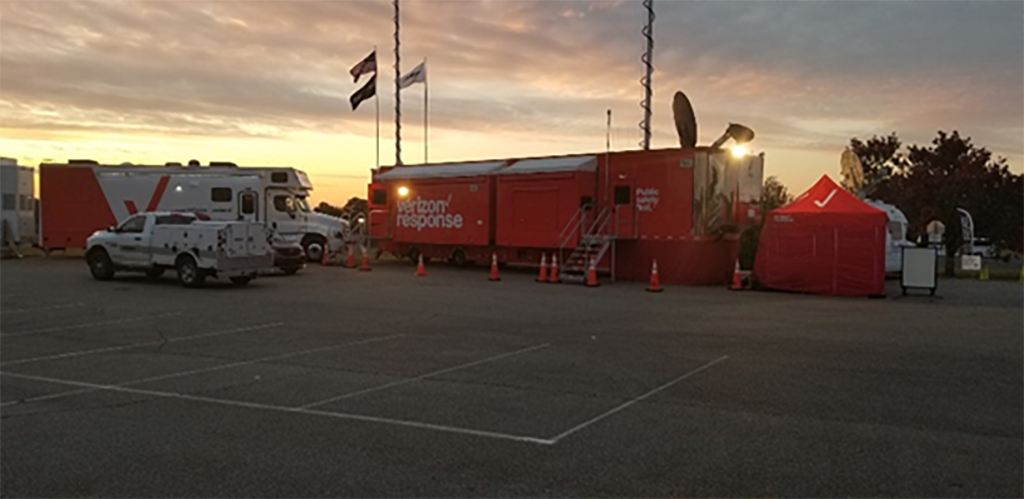
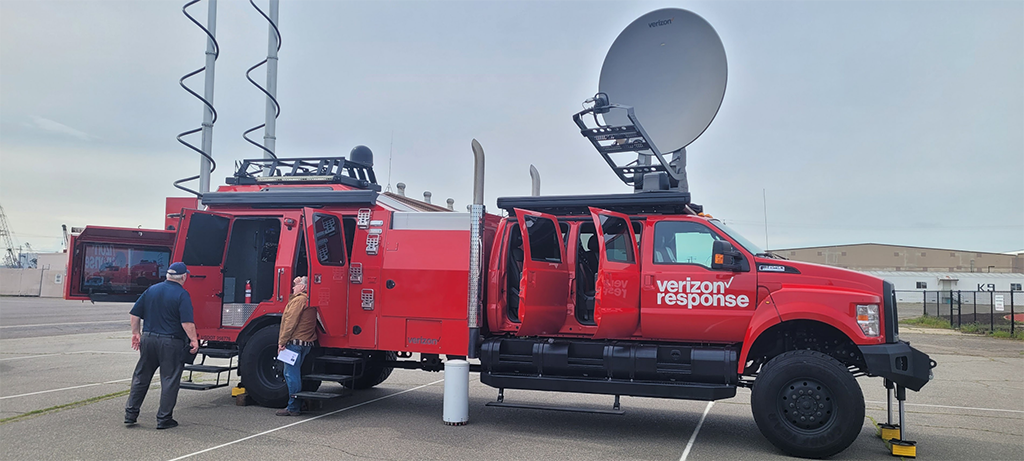



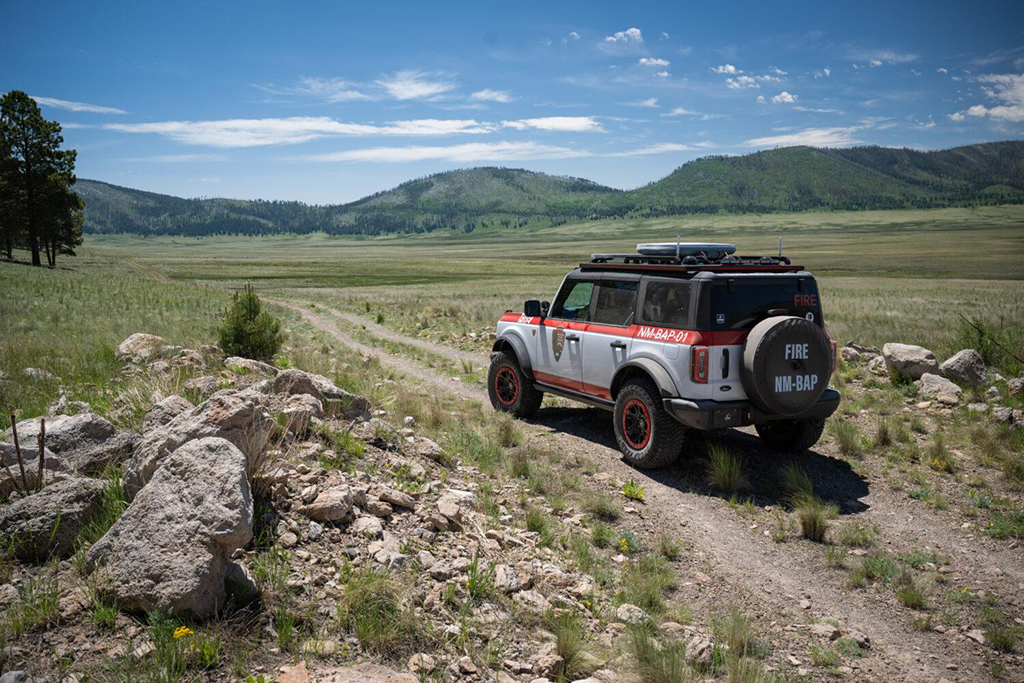
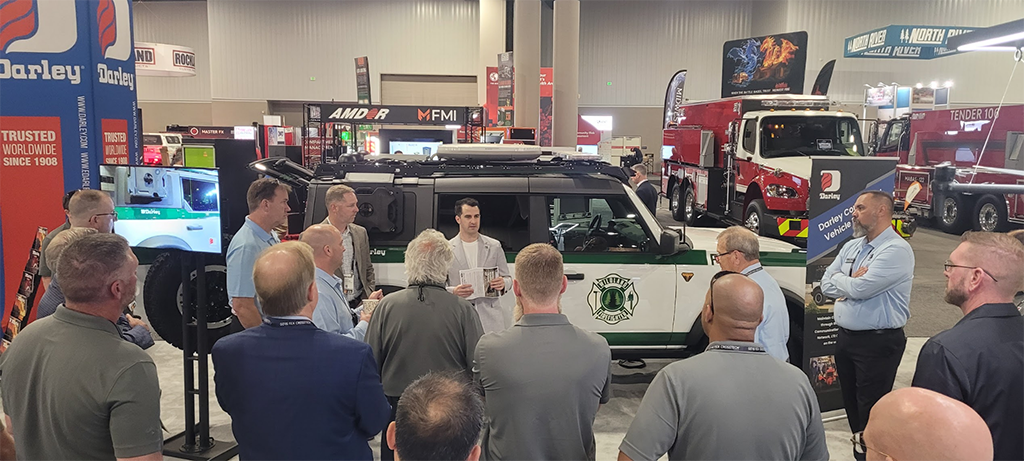
Darley and Ford Motor Company
The innovative collaboration between Darley and Ford Motor Company spans more than 100 years, from when Henry Ford approached W.S. Darley about building a fire truck on a Ford Model T. In 2023, the two companies aligned to introduce a next-gen-eration incident command rig, enhanced by strategic partnerships with technology leaders like Microsoft, IP Access, Dejero, Kymeta, Hypha, DroneSense, and Stealth Power. These systems integration approaches exemplify the future of emergency response through the lens of advanced mobile infrastructure. This alliance transcends traditional boundaries by crafting mobile command centers that are hubs of comprehensive, high-speed connectivity and technological capabilities. Equipped with technology that provides com-munication and data analysis tools, these units empower first responders with realtime data sharing, analysis, and a level of sit-uational awareness previously unattainable.
The collaboration showcases a paradigm shift in how emergency services can leverage the synergy of automotive engineering and cyber-physical systems, offering a practical roadmap for future innovation in public safety operations. By integrating solutions from IP Access for resilient integrated communications, Dejero’s network aggregation for uninterrupted connectivity, Kymeta’s mobile satellite antennas, Hypha’s mesh networking, DroneSense’s aerial intelligence, and Stealth Power’s energy management, these rigs amplify the proficiency, safety, and functionality of public safety response teams.
These forward-thinking partnerships pave the way for a new era in emergency response. The combination of intelligent technolo-gies ensures that responders are equipped, informed, and ready to tackle the evolving demands of modern public safety, heralding a future where communities are safer, more secure, and persistently resilient.
The Future of Public Safety with Smart Emergency Response Vehicles Systems
By setting a precedent with the partnership between Darley and Ford and further expanding this collaborative ecosystem, the potential to revolutionize public safety operations with SMART city adjacent mobile command centers that are agile and fully equipped for the digital age is within reach. This holistic approach, underscored by investment in forward-thinking future strategy, aims to enhance the operational capabilities of emergency services and ensure that first responders are equipped with the digital tools necessary to meet the challenges head-on.
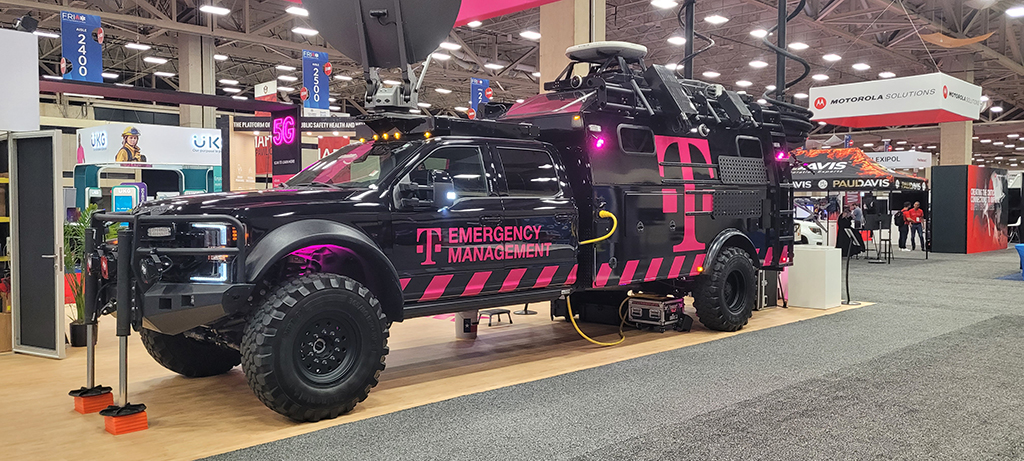
In the ever-evolving landscape of emergency services, integrating sophisticated digital systems in emergency response vehicle systems heralds a transformative era for public safety. The trends to divest legacy systems like land mobile radio (LMR) and invest in radio over Internet Protocol (RolP) are causing venture capital teams to invest in technologies that promise to redefine how first responders engage with their environments and execute their missions. Through collaborations with industry pioneers, efforts are underway to test and refine prototype trucks that are not merely vehicles but hubs of advanced digital ecosystems.
These initiatives focus on leveraging AI, enhanced connectivity, and comprehensive data analytics to amplify firefighting capabilities. Moreover, addressing broader societal issues through innovative public safety solutions underscores the holistic approach required for proactive community risk reduction in today’s complex emergency scenarios. As discussions extend to incorporating cutting-edge technologies like fully self-driving vehicles and quantum computing strategies, it’s evident that a multidimensional strategy will underpin the future of emergency response vehicles. This strategy will include data-driven insights and real-time feedback mechanisms and prioritize adaptability, software-defined features, and a commitment to continuous innovation and collaboration.
Integrating an intelligent apparatus as a software-defined vehicle with advanced mobile infrastructure and highspeed connectivity represents a significant leap forward in public safety technology. By embracing these innovations, we can enhance the operational capabilities of fire, rescue, and EMS teams, ensuring they remain at the cutting edge of emergency response. This collaboration with technology leaders and the continuous exploration of new solutions will drive the evolution of public safety, ultimately saving more lives and protecting our communities with greater productivity and effectiveness. The integration of vehicle-to-everything (V2X) autonomous technology with cutting-edge advancements will empower future vehicles to do more than just respond to emergencies. They will anticipate, understand, and take action with exceptional precision and performance, all within a multidimensional, digitally enhanced world.
References
Wana, T., Vincent, B., & Krick, K. (2023, September 15). Enhance mission-critical situational awareness by XR and 5G – Ericsson. CIP News. https://criticalinfrastructureprotection.com/enhance-mission-critical-situational-awareness-by-xr-and-5g-ericsson/
Ghadialy, Z. (2023, February 1). Evolution of AT&T’s Flying Cow (cell on wings). Evolution of AT&T’s Flying COW (Cell on Wings). https://www.telecomsmfrastracture.com/2023/02/evolution-of-at-flying-cow-cell-on-wings.html?m=1
Thesheetztweetz. (2024a, January 10). SpaceX and T-Mobile send Erst texts via Starlink Satellites. CNBC. https://www.cnbc.com/2024/01/10/spacex-t-mobile-send-first-texts-via-starlink-satellites.html
Thor Emergency Response Vehicle. Verizon Business. (n.d.). https://www.verizon.com/business/solutions/public-sector/public-safety/programs/thor-emergency-response-vehicle/
Active Digital Twins and intelligent infrastructure. Autonomy Institute. (2021, October 9). https://autonomy.institute/active-digital-twins-and-intelligent-infrastructure/
USDOT opens a $40 million grant opportunity for connected vehicle technologies that will help save lives on our nation’s roadways. FHWA. (n.d.). https://highways.dot.gov/newsroom/usdot-opens-40-million-grant-opportunity-connected-vehicle- technologies-will-help-save
2024 fleet technology trends report. Fleet Technology Trends Report | Verizon Connect. (n.d.). https://www.verizonconnect.com/v/fleet/gpsfleet/fleet-technology-trends-report/
Erich, J. (2024, February 2). Partnerships to Empower Public Safety (eBook). Police1. https://www.police1.com/police-products/police-technology/wireless-communications/partnerships-to-empower-public-safety-ebook
Fire Apparatus & Emergency Equipment. https://www.fireapparatusmagazine.com/fire-apparatus/ford-donates-bronco-wildland-firefighting-command-rig-to-national-park-service
KIRK McKINZIE is a captain (ret.) and a 35-year fire service veteran who is an advisor, speaker, and author to government, enterprises, academia, startups, and operators focused on emergency response digitization and innovation for safer and more secure communities.
KEVIN SOFEN is a leading strategist and innovator in emergency response technologies, committed to elevating public safety via technological advancements in fire, rescue, and EMS operations. He hosts and founded the SMART Firefighting Podcast, a platform for dialogs on tech- driven firefighting, hosting experts and frontline professionals.

